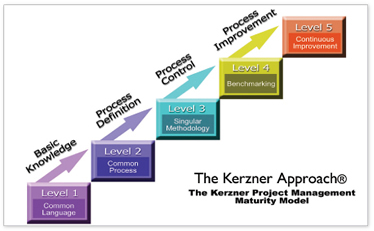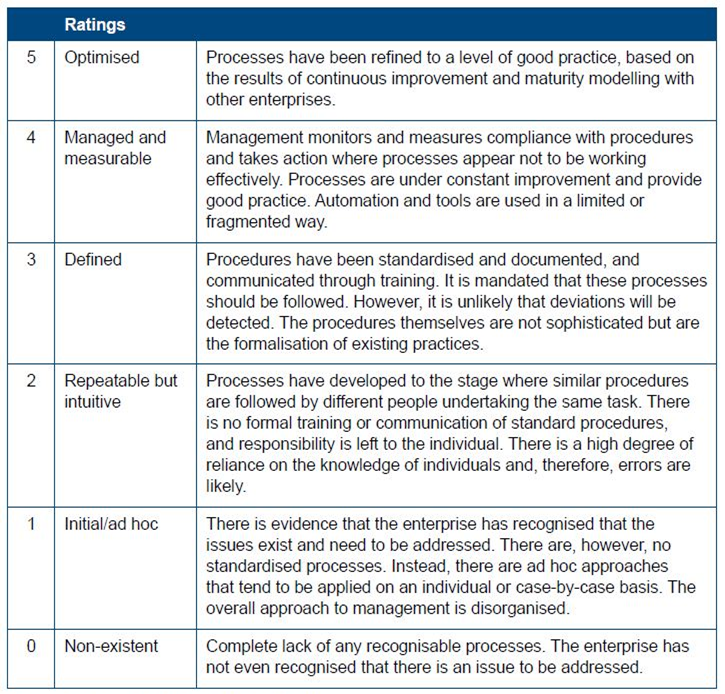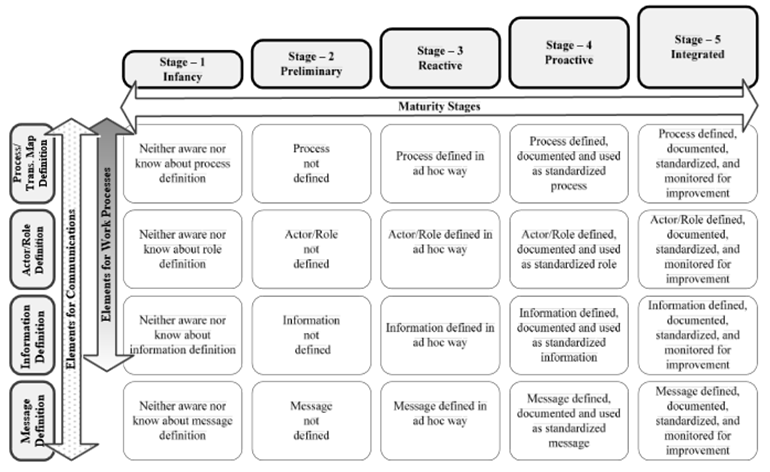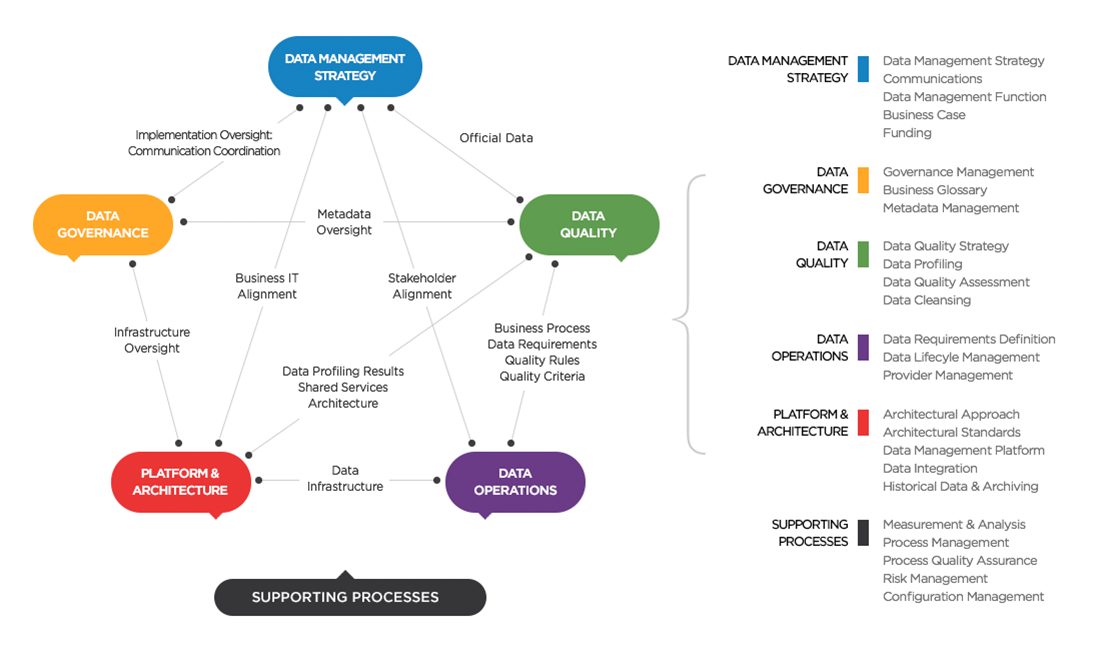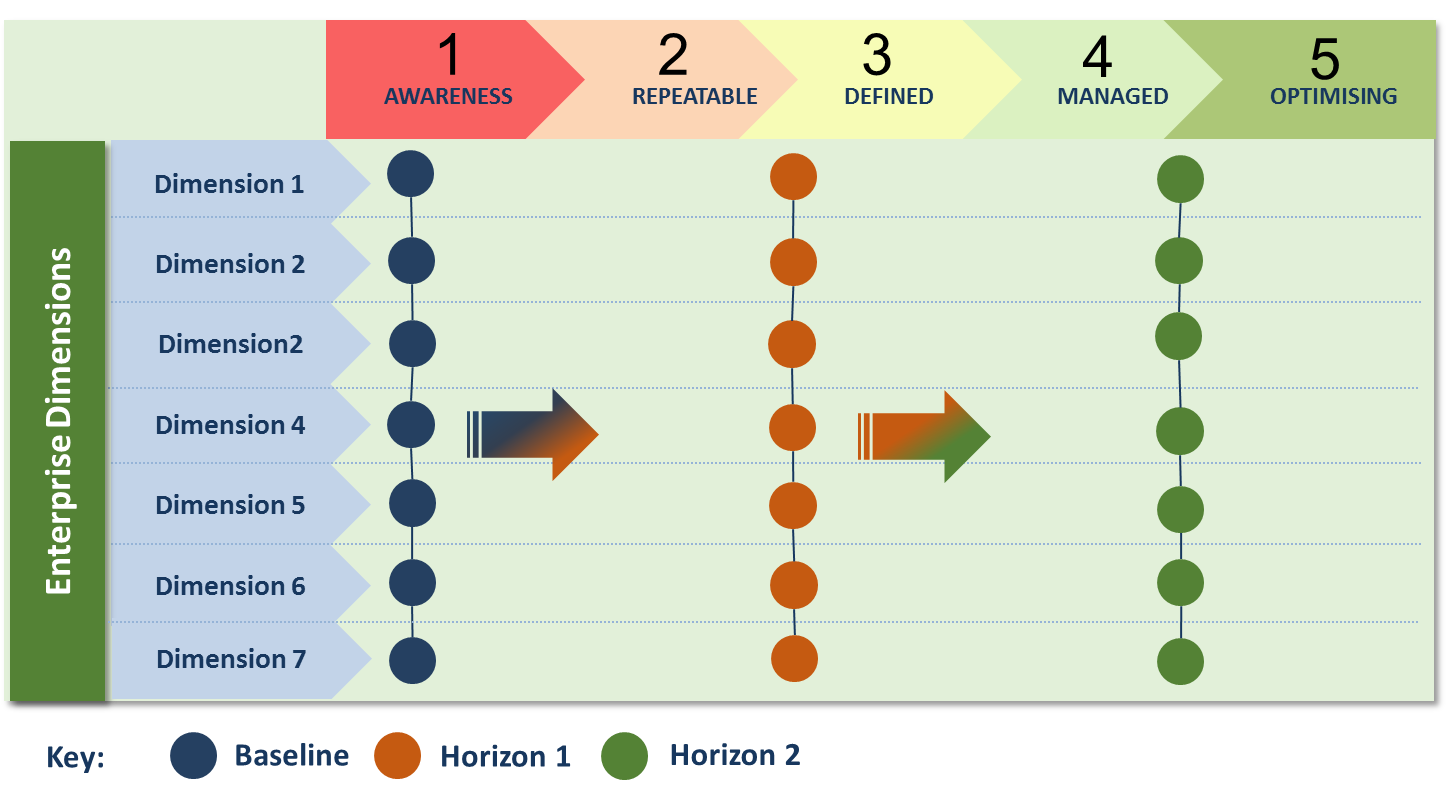Managing the Maturity of the Enterprise.
Blog: The Knowledge Economy
Understanding and acknowledging the capability of an enterprise to deliver satisfactorily its portfolio of goods and services to its customers, whether they be internal or external, is absolutely essential.
Without sufficient insight, the spectre of over-promising and under-delivering, with all the consequences of doing so, becomes a very real possibility.
With insight it is possible to mitigate where the capability is low and manage expectations accordingly.
Insight can be gained through the application of maturity models on key aspects of the enterprise. Exploring where the enterprise sits within a maturity continuum and establishing benchmarks of performance provides the opportunity to realistically assess how the enterprise operates and how it may be improved.
A maturity model is composed of a continuum of levels that describe how well the processes, capabilities and organisational behaviours of an enterprise are reliably and sustainably applied to produce required outcomes.
Many models have been developed with their focus being on specific technology or business areas.
Examples, some with supporting diagrams or tables, follow:
Project Management
- The PM Solutions Project Management Maturity Model.
- The Project Management Maturity Model (ProMMM).
- The Berkley PM Process Maturity Model
- The Project Management Process Maturity (PM)2 model.
- The OPM3.
Kerzner Project Management Maturity Model (KPM3)
Fraud and Corruption Maturity Model
(Office of the Auditor General – Western Australia)
Based on key components of the Australian Standard with a focus on:
- Assessing and managing fraud risks.
- Fraud policy development.
- Communication and training.
- Prevention and detection.
- Response.
Infrastructure Management- Process Maturity Model
Data Management Maturity Model
(http://www.dama.org/files/public/NSC_Data%20Management%20Maturity%20Models%20DAMA%2020130604.pdf)
Many of the models are clearly based on the Capability Maturity Model Integration (CMMI) distributed by the CMMI Institute (www.cmmiinstitute.com/cmmi-solutions). The CMMI models are described as collections of effective practices and process improvement goals that organisations can use to evaluate and improve their processes. They provide models targeting
- Acquisitions (CMMI-ACQ)
- Development (CMMI-DEV)
- Services (CMMI-SVC)
- People (People CMM)
- Data Management Maturity (DMM)
Models are based on a five level process maturity continuum – where the lowest (1st) level describes a state, in the worst scenario, of chaos and the uppermost (5th) level is the ideal state where processes would be systematically managed by a combination of process optimisation and continuous process improvement.
The CMMI Institute has developed the ‘Standard CMMI Appraisal Method for Process Improvement (SCAMPI). This is lengthy but well worth reading. It provides a valuable methodology to assist the assessment process and establishing a benchmark from which to operate.
SCAMPI provides insight on what is required to
- Plan,
- Prepare
- Conduct and
- Report
an appraisal.
Acknowledging where weaknesses sit allows for consequential risks to be properly avoided or mitigated.
Improved understanding allows for the leveraging of true strengths to improve overall performance.
Establishing a maturity baseline on those dimensions that are deemed as important to delivering on a defined strategy is essential. Baselining provides an enterprise with the opportunity to develop actionable and measurable programmes of work, targetted over multiple time horizons. Increasing overall capability and improving business processes through managing maturity future-proofs the enterprise providing a framework for reliable delivery of products and services. This supports the realisation of positive outcomes, ongoing and sustainable business benefits and enhanced reputation.
Leave a Comment
You must be logged in to post a comment.
